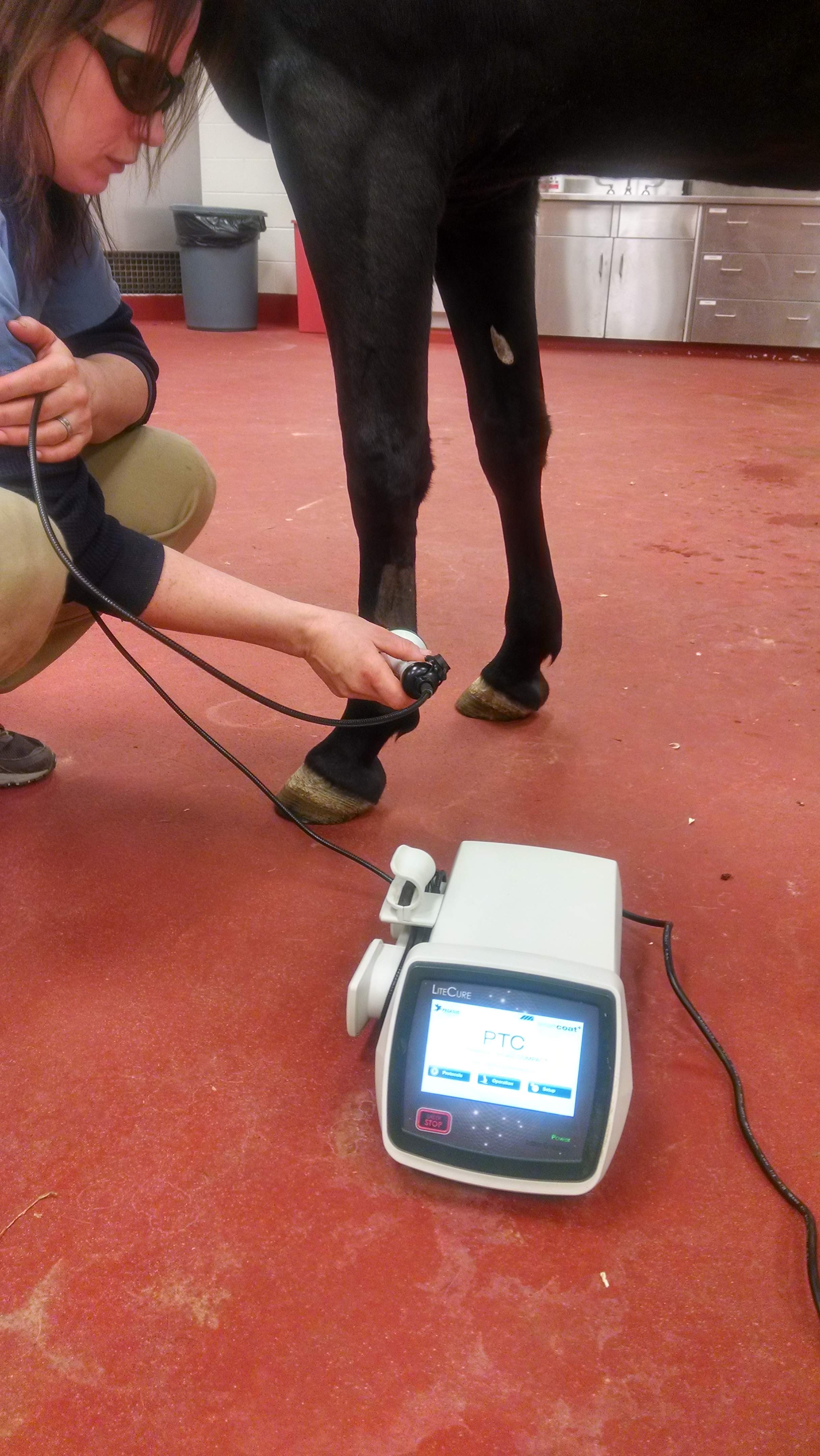Whatever You Required to Find Out About Equine Therapy for Mental Wellness
Whatever You Required to Find Out About Equine Therapy for Mental Wellness
Blog Article
Assessing the Efficiency of Laser Treatment in Equine Therapy for Injury Recovery
The analysis of laser therapy's performance in equine injury recovery pivots on multiple aspects, including recovery time, pain reduction, and cells regrowth. Vets often observe remarkable end results with laser treatment contrasted to standard techniques, placing it as a vital component in equine care.
Understanding Laser Therapy
Laser treatment has actually come to be a critical device in veterinary medicine, particularly in the therapy of equine problems. Understood for its non-invasive nature and effectiveness, laser treatment includes the application of specific wavelengths of light to boost tissue fixing and lower swelling. This therapeutic modality is increasingly favored for its capability to increase the recovery process in horses suffering from a range of musculoskeletal injuries and chronic conditions.
The primary mechanism behind laser therapy is its capacity to boost mobile functions. When laser light penetrates the skin, it is soaked up by mitochondria, the giant of cells, which results in boosted manufacturing of adenosine triphosphate (ATP) This biochemical power increase facilitates mobile repair work and regeneration. Furthermore, laser therapy advertises vasodilation, boosting blood circulation and oxygen delivery to broken cells, hence speeding up healing.
In equine medication, laser treatment is specifically beneficial for problems such as tendonitis, osteoarthritis, and wound recovery. The strategy is lauded for its pain-relieving properties, permitting equines to regain flexibility and feature much more swiftly. Vets likewise appreciate its minimal negative effects contrasted to various other treatment techniques, making it a trusted and safe alternative for equine care.

Just How Laser Treatment Works

Upon absorption, these photons set off a series of biochemical adjustments, boosting mitochondrial function and bring about increased adenosine triphosphate (ATP) manufacturing. This surge in ATP increases mobile metabolism, promoting tissue fixing and regeneration. Additionally, laser therapy modulates inflammatory reactions by affecting cytokine levels and lowering oxidative stress and anxiety, thus minimizing pain and swelling.
Another significant aspect of laser treatment is its role in improving microcirculation. The therapy advertises vasodilation, enhancing blood flow and oxygen distribution to broken tissues (Equine Therapy). This helps with the elimination of cellular particles and supports the proliferation of fibroblasts and collagen synthesis, important for injury healing
Clinical Evidence
The efficiency of laser treatment in equine therapy has actually been validated with different scientific studies, showcasing its therapeutic possible across a range of conditions. A study conducted by Turner et al. (2012) showed that steeds treated with low-level laser treatment (LLLT) for ligament injuries showed accelerated healing compared to those getting conventional therapies.
Similarly, research by Johnson and colleagues (2015) concentrated on equine muscular tissue injuries, exposing that laser therapy substantially accelerated muscle mass fiber regrowth review and lowered muscle mass rigidity. These searchings for were proven by histological analyses showing better muscle cells organization. Furthermore, clinical evaluations have shown that laser treatment can minimize persistent conditions such as osteo arthritis. A research study by Smith et al. (2018) reported that equines with osteoarthritic joints experienced significant discomfort relief and increased you can try this out variety of movement adhering to a routine of laser treatment sessions.
Veterinarian Insights

Veterinarians also value the versatility of laser treatment. She directs out that laser therapy can be tailored to the certain demands of each steed, ensuring optimum results.
Additionally, vets value the capacity to integrate laser therapy with other treatment techniques. This multimodal strategy can boost overall therapy efficiency, offering a thorough solution for equine recovery. Such endorsements from experienced professionals emphasize the growing acceptance and application of laser treatment in equine medication.
Practical Considerations
An essential facet of carrying out laser treatment in equine therapy entails comprehending the useful factors to consider that ensure its efficiency and security. First and primary, it is important to choose the ideal laser tool, as different kinds vary in wavelength, power, and penetration depth. Equine Therapy. Vets have to be well-versed in these criteria to customize treatment protocols successfully to each injury type
Additionally, the frequency and duration of laser therapy sessions need careful planning to take full advantage of restorative benefits while lessening any type of prospective damaging impacts. Consistent tracking of the horse's response to therapy can lead essential adjustments in the treatment routine. Establishing a safe and controlled setting during therapies is also vital to protect against accidental direct exposure to laser exhausts, which could damage both the horse and the trainer.
Educating and accreditation of personnel administering laser therapy are critical to ensure proper method and to maintain learn the facts here now safety requirements. Furthermore, keeping precise records of each session, consisting of laser setups and observed end results, is important for assessing the total performance of the treatment and for making data-driven choices.
Conclusion
Laser treatment has actually arised as a reliable technique in equine injury recovery, supplying considerable benefits in recuperation time, discomfort relief, and cells recovery. Medical researches highlight significant enhancements in problems such as tendonitis and osteo arthritis, credited to boosted mobile function and enhanced ATP manufacturing. Vet monitorings affirm these findings, highlighting premium end results compared to typical therapies. For ideal results, constant monitoring and individualized therapy protocols stay essential in leveraging the full capacity of laser treatment in equine care.
Report this page